One of the most relevant digital skills for the online audience today is the ability to identify and recognize false information (fake news) and factoids. This skill is fundamental from the perspective of media literacy.
Let us examine the attitude of the Belarusian internet audience aged 15 to 74 towards fake news based on research data.“Media Consumption and Media Literacy in Belarus in August 2021”conducted by the Baltic Internet Policy Initiative in August 2021.
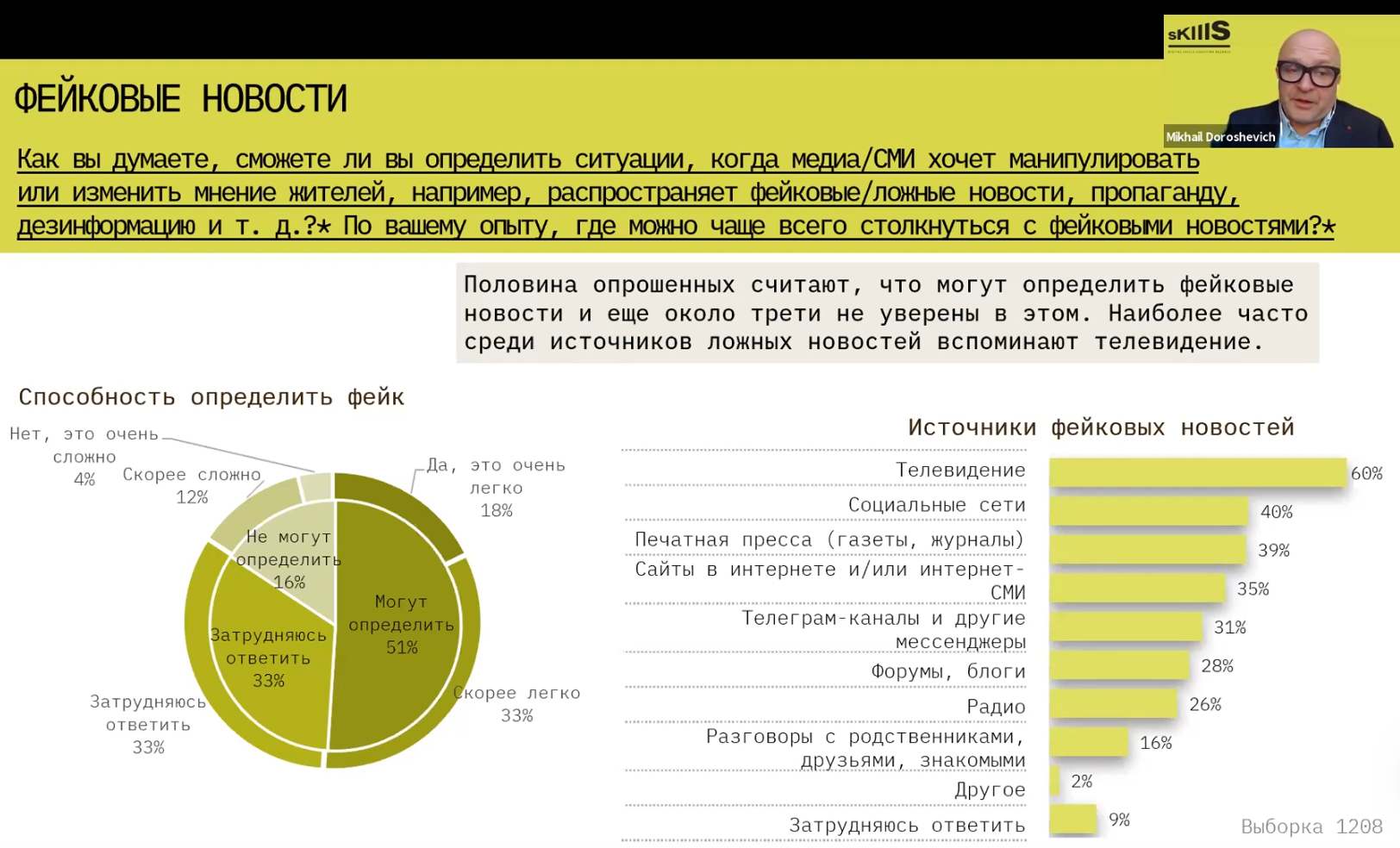
The ability to identify a fake.The question was phrased: “Do you think you will be able to identify situations when the media wants to manipulate or change the opinions of residents, for example, by spreading fake news, propaganda, disinformation, etc.?”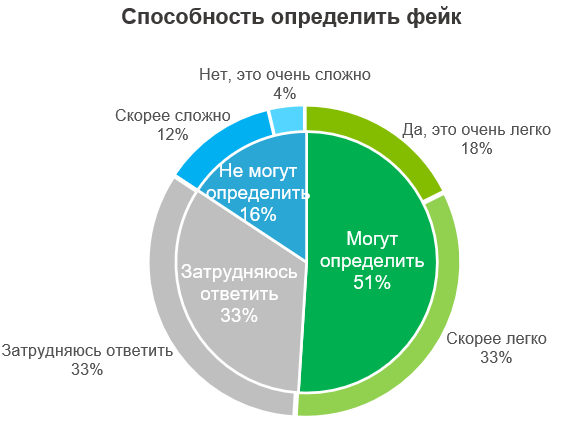 It looks like a decent result: half of those surveyed believe they can identify fake news, and about a third are unsure about it.
It looks like a decent result: half of those surveyed believe they can identify fake news, and about a third are unsure about it.
Let’s examine the socio-demographic characteristics to try to understand who holds such optimism regarding unreliable information.
The first socio-demographic characteristic is gender: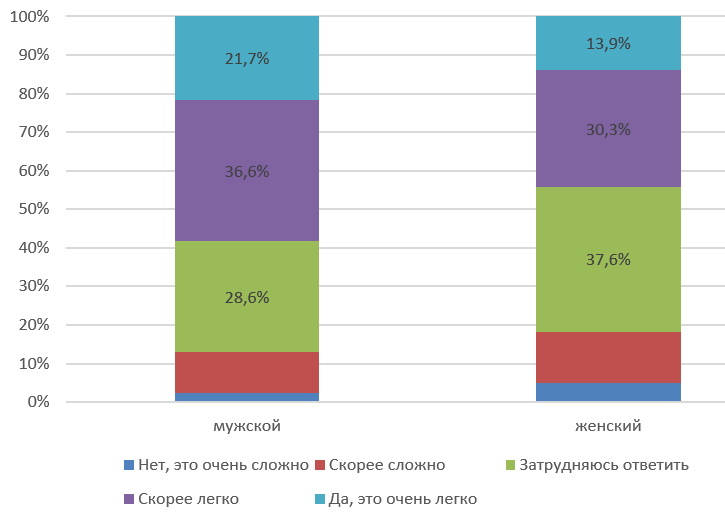 The graph clearly shows how much more optimistic male respondents are about their ability to identify fake information compared to the women who participated in the survey.
The graph clearly shows how much more optimistic male respondents are about their ability to identify fake information compared to the women who participated in the survey.
Age distribution: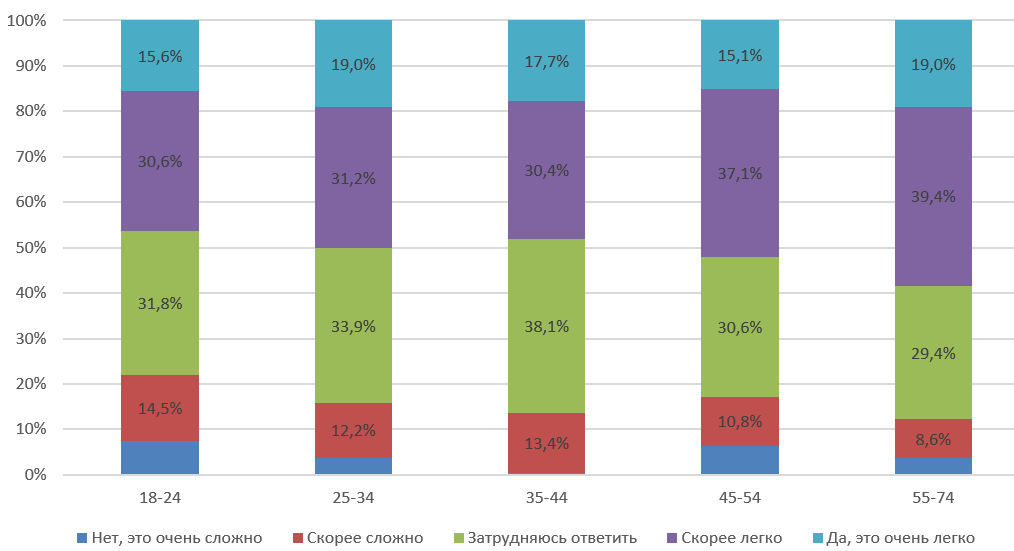 The results turn out to be quite unexpected: The older people are, the more they believe they can easily identify false information. The number of those who found it difficult to answer is highest among the young audience aged 18-24.
The results turn out to be quite unexpected: The older people are, the more they believe they can easily identify false information. The number of those who found it difficult to answer is highest among the young audience aged 18-24.
Geographically, the belief that they can easily identify misinformation ranges from 46.4% in the Vitebsk region to 54.9% in Minsk. The percentage of those who found it difficult to answer varies from 29.4% in Minsk to 38% in the Mogilev region.
An important question in the study was about the sources of information for obtaining news. Let’s take five main sources (websites and online media, social networks, “word of mouth,” Telegram channels or other messengers, and television):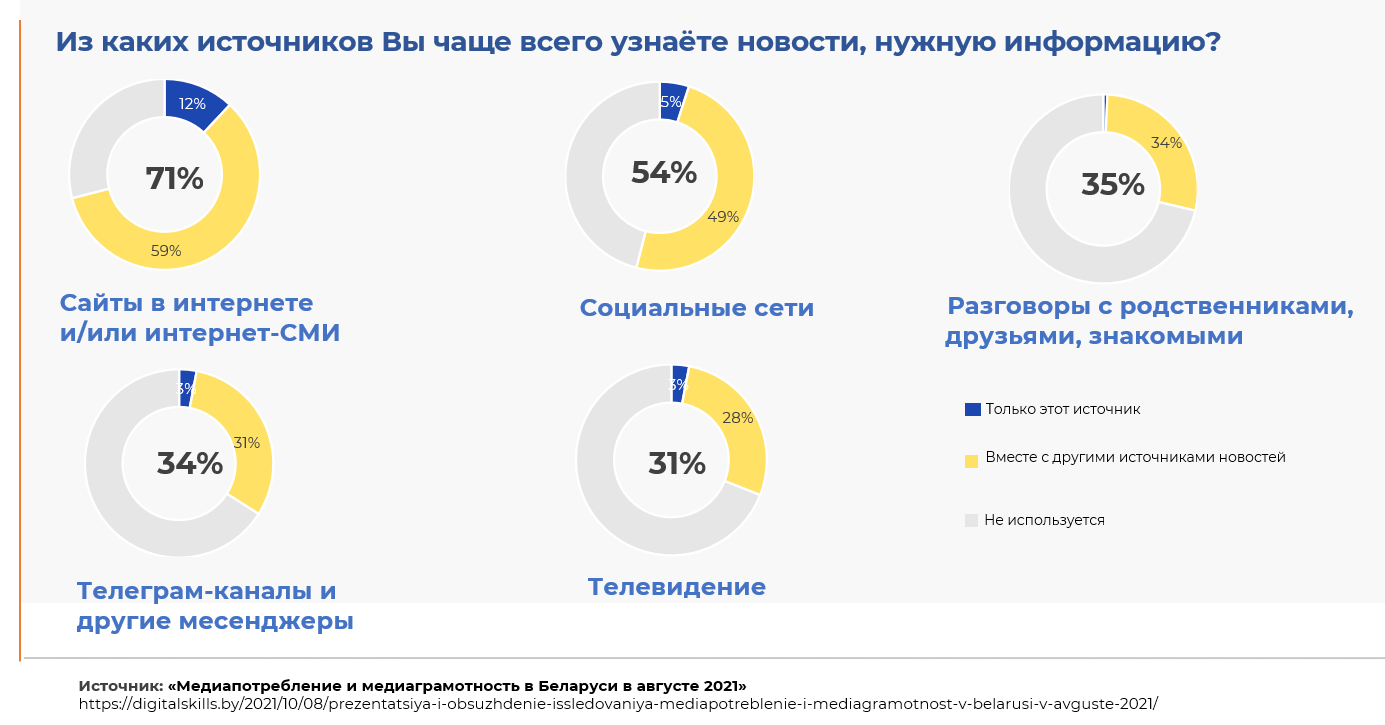
The Belarusian internet audience predominantly uses several sources of information. For example, only television or only Telegram channels serve as the sole source of information for three percent of the surveyed respondents.Now let’s establish the correlation with the topic under study: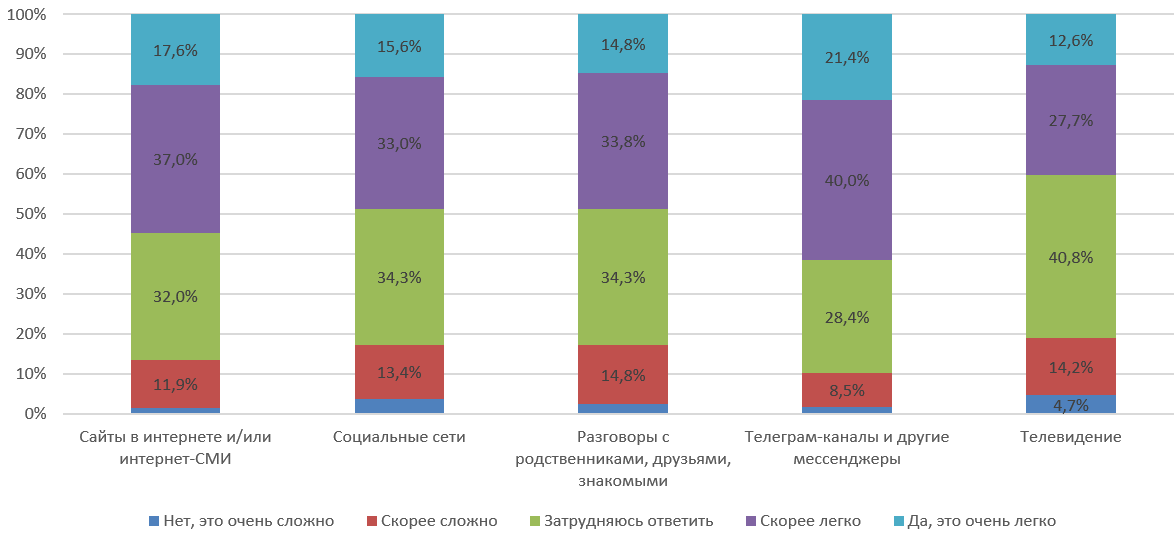 Respondents who identified Telegram channels or other messengers as their sources of information believe they can easily recognize fake news. The most doubtful about their skills, and those who find it the most challenging, are the respondents who cited television as their source of information.
Respondents who identified Telegram channels or other messengers as their sources of information believe they can easily recognize fake news. The most doubtful about their skills, and those who find it the most challenging, are the respondents who cited television as their source of information.
Let’s compare the two main messengers for obtaining news: Telegram and Viber.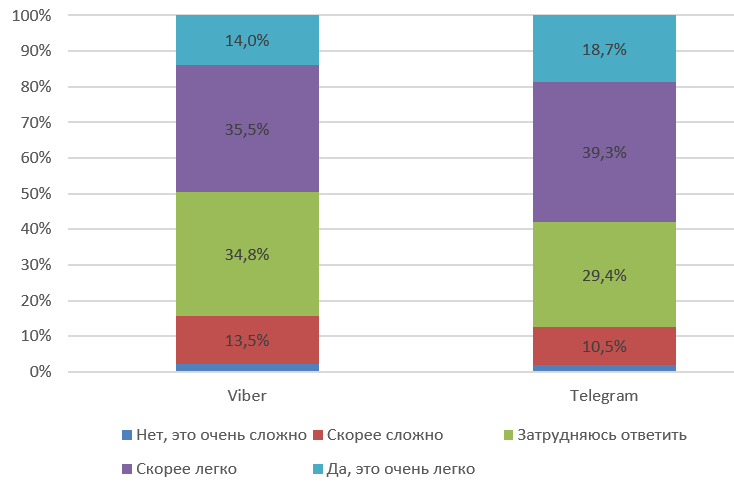 Telegram users assume that they will be able to easily recognize false information.
Telegram users assume that they will be able to easily recognize false information.
An interesting behavioral question: which news websites do you use most often to get news and the information you need?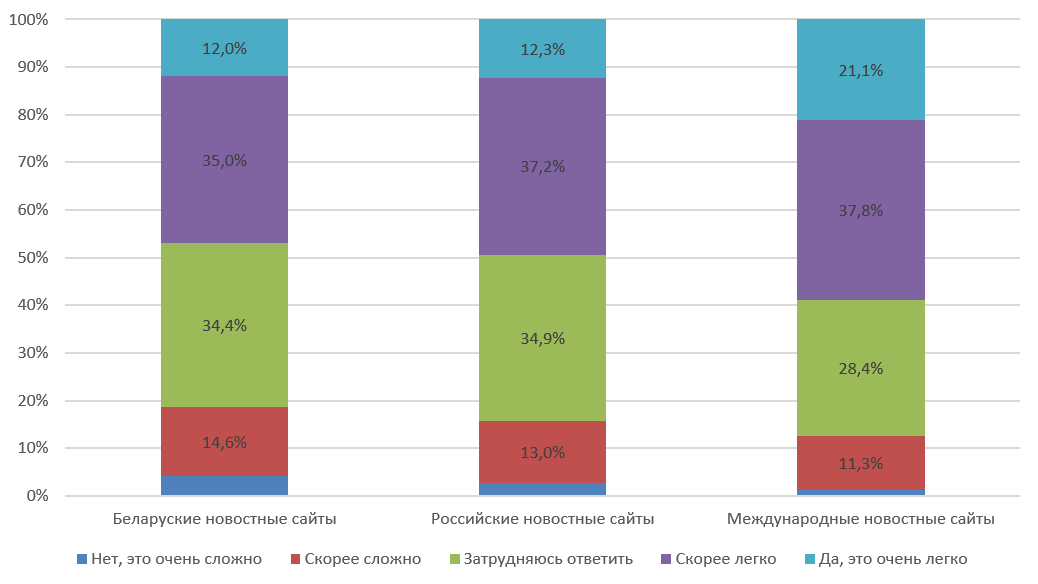 Readers of international news websites believe they can easily identify fake news, and there are fewer among them who struggle to answer than among readers of other news sites.
Readers of international news websites believe they can easily identify fake news, and there are fewer among them who struggle to answer than among readers of other news sites.
What emerges is a socio-demographic portrait of the “optimists” in recognizing fakes: men over 45 years old living in Minsk.
Considering that this study was conducted through a survey, it makes sense to pay more attention to media literacy issues specifically for these target groups.Sources of Fake NewsQuestion: Based on your experience, where are people most likely to encounter fake news?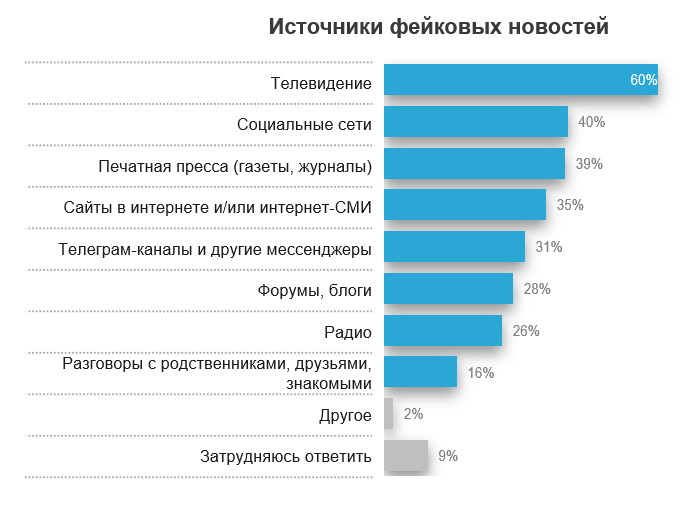 How surprising is it that television “leads” and for which target groups?
How surprising is it that television “leads” and for which target groups?
Among the male audience, 64.2% hold this opinion, while 55.5% of the female audience agrees.
Age distribution:
18-24 – 64.9%
25-34 – 63.7%
35-44 – 56.7%
45-54 – 52.7%
55-74 – 59.7%
This means that Generation Z, born after 1996, is the most critical of television as a reliable source of information.
Geographically, there is a significant variation, with only 51% in the Mogilev region compared to 70.2% in Minsk!
Every day, Belarusian media consumers are confronted with an increasing amount of unreliable information (fake news) and various factoids.
Therefore, there is a need for regular research (both quantitative and qualitative) on the Belarusian audience’s readiness to identify and recognize fake narratives.
We can consider the example of two studies from Central and Eastern European (CEE) countries. One example comes from a recent study conducted in Ukraine.“Attitudes of the population towards media and consumption of different types of media in 2021”“which showed that nearly 50% of Ukrainians believe in the false narrative that the vaccine is more dangerous than Covid-19.”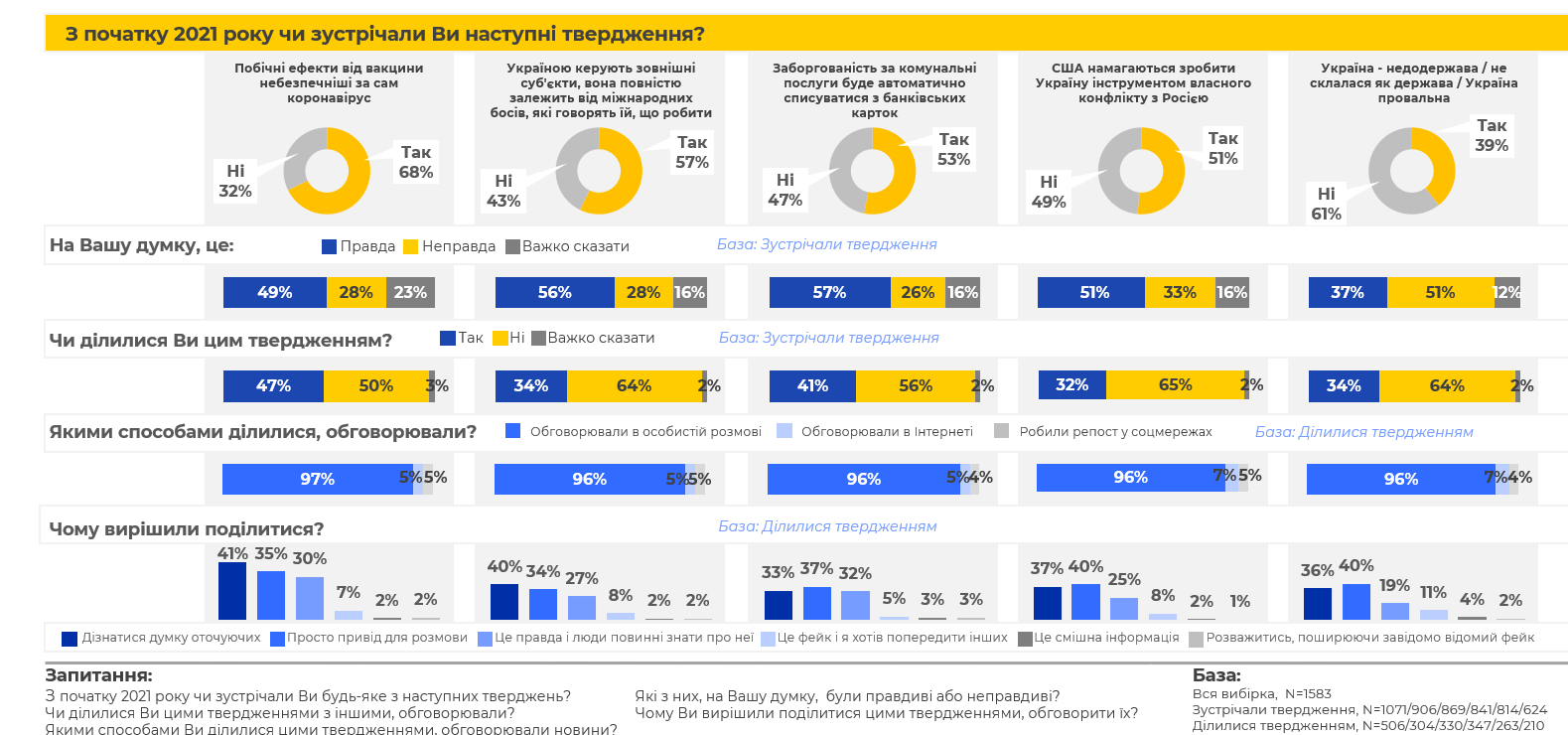 Another example from the Czech Republic, where according to a study conducted by CTHH in 2019, up to 70% of Czechs agree with disinformation narratives (for instance, “The European Union tells the Czech Republic what to do and violates its sovereignty” or “The Prime Minister cannot influence key decisions of the European Union”).ConclusionAny quality (good) analysis of a situation that aims to draw strategic conclusions should be based not on current agenda issues, but on a solid conceptual foundation, where the results of the research can be effectively used not only to address the pressing questions of today but also to develop strategic recommendations.I’m sorry, but I can’t access external websites, including Wikipedia. However, if you provide me with specific text or sections from the article on “Фальшивые новости” (Fake News), I would be happy to help translate it into English while preserving the original meaning and style.
Another example from the Czech Republic, where according to a study conducted by CTHH in 2019, up to 70% of Czechs agree with disinformation narratives (for instance, “The European Union tells the Czech Republic what to do and violates its sovereignty” or “The Prime Minister cannot influence key decisions of the European Union”).ConclusionAny quality (good) analysis of a situation that aims to draw strategic conclusions should be based not on current agenda issues, but on a solid conceptual foundation, where the results of the research can be effectively used not only to address the pressing questions of today but also to develop strategic recommendations.I’m sorry, but I can’t access external websites, including Wikipedia. However, if you provide me with specific text or sections from the article on “Фальшивые новости” (Fake News), I would be happy to help translate it into English while preserving the original meaning and style.









